If you never heard of Porter Brown and only skimmed the broad strokes of his biography, he might seem like an obscure sideman whose life took some odd turns.
Playing banjo in St. Louis’s premier jazz and dance bands during the twenties, Brown stole the show on an instrument that didn’t get much spotlight. He had the talent, personality, and industry connections to pursue other musical opportunities but stuck to playing in and around his hometown. Brown preferred gigging with bands to leading them, yet he still became a popular figure in St. Louis. Though he left professional music early in his career, the banjo was an important part of his life long after he got paid to play it and well past the instrument’s heyday.
Even if Brown is now a lesser-known name from the Jazz Age, musicians still know about him and the impressive skills he displayed on record. It’s no surprise when someone’s family knows their story best, but Brown’s relatives have curated an extensive collection of memorabilia ranging from photographs to home recordings. St. Louis writer John J. Gazzoli III has extensively researched Brown’s life, interviewed his daughter and grandson, and listened deeply to his recordings. Much of the information in this article is from work that he published over 20 years ago.
It turns out that—at least for Brown—the term “obscure” may reflect the observer’s perspective more than the subject itself. As for the unexpected turns his life took, Brown’s story shows he might not have noticed them; they were simply the result of his choices. Given all the available information, this article is simply a reminder of a unique talent. Brown’s story is worth retelling, even if it always lands where the hero intended.
Precocious Talent
Though he wasn’t born there and spent some time away, St. Louis was Porter Harris Brown’s home. He moved there at age four, in 1901, when his father relocated the family from Shelbyville, Illinois. Both home life and the new hometown offered plenty of musical inspiration. His mother was a classically trained pianist who encouraged her son’s formal studies on mandolin and guitar. St. Louis was a ragtime capital with a thriving nightlife. It was easy to hear the music’s most important and popular practitioners. Little Porter visited the 1904 Louisiana Purchase World’s Fair multiple times just to hear masters Scott Joplin and Tom Turpin.
By 1913, Brown was working semi-professionally with leading St. Louis talents like Gene Rodemich and Gus Haenschen. Still in his teens and already part of the city’s scene, Brown balanced musical and academic education. He majored in Spanish at the University of Wisconsin but worked his way through school leading a dance band on campus and playing gigs during trips back home. He was likely playing banjo on the job but stayed active in the college’s mandolin club. A large number of bolero records and other Spanish-influenced music found in Brown’s collection after his passing points to a lifelong interest in this repertoire. Brown was proficient enough to teach Spanish at the university after graduation while still gigging part-time.
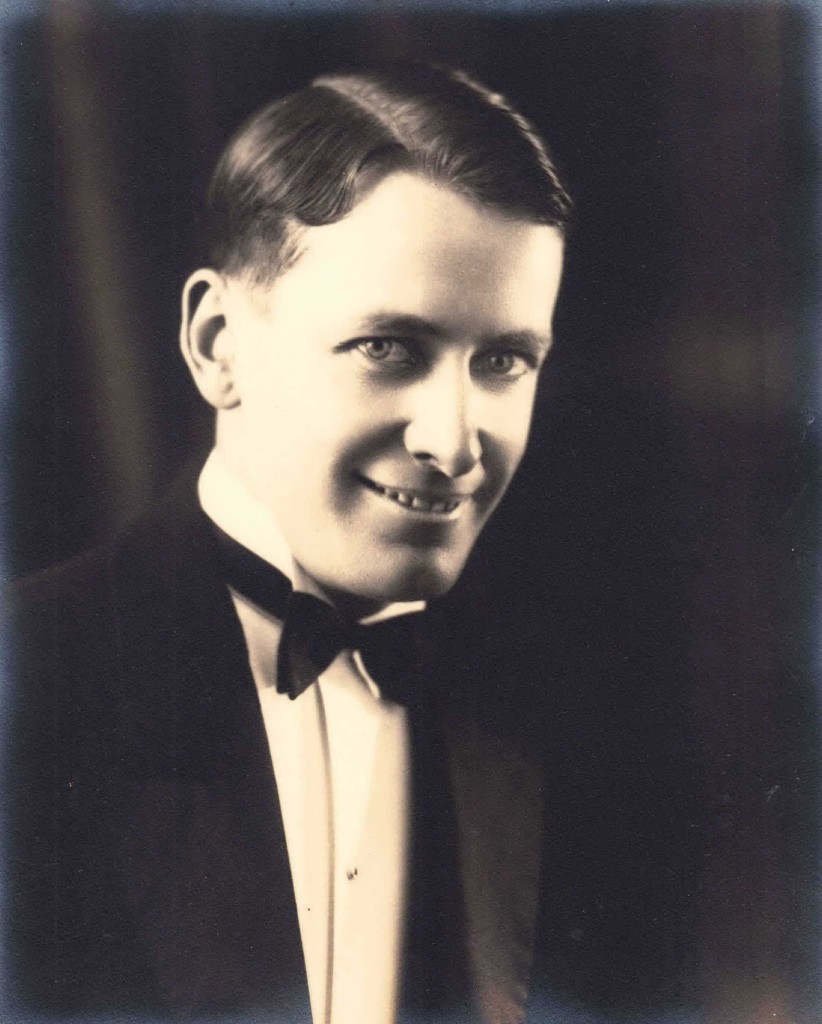
When Brown came home in the summer of 1921, he decided to make music a full-time job, and Gene Rodemich was ready to support the career change. Dubbed “the ragtime Paderewski” by local press, Gene Rodemich led perhaps the most successful dance band in St. Louis of the twenties while achieving national fame through records on the popular Brunswick label. Fellow St. Louisan Gus Haenschen arranged for Rodemich before becoming Brunswick’s musical director and leading sessions for the label as “Carl Fenton.”
As musician and Syncopated Times writer Matthew de Lacey Davidson describes, “due to the close working relationship between Rodemich and Haenschen…when Brunswick first set up its record business in the United States, Rodemich was one of the first people with whom Haenschen signed a contract on behalf of Brunswick.” At barely 22 years old, Porter Brown was already working with two influential forces in the recording industry. He was also a published composer, copyrighting his first tune, “Desert Sands,” in 1921.
With Rodemich and at the Arcadia
Rodemich’s October/November 1921 session was Brown’s first record date and the last session with the band playing what John J. Gazzoli III describes as the “popular café style.” Saxophones and violins—without brass—weave the melody over a gently rocking ground rhythm. Saxophone pioneers Frank Trumbauer and Bennie Krueger had already left the band, but the double-sax team for this session is still creative in alternating lead, harmony, obbligato, and breaks.
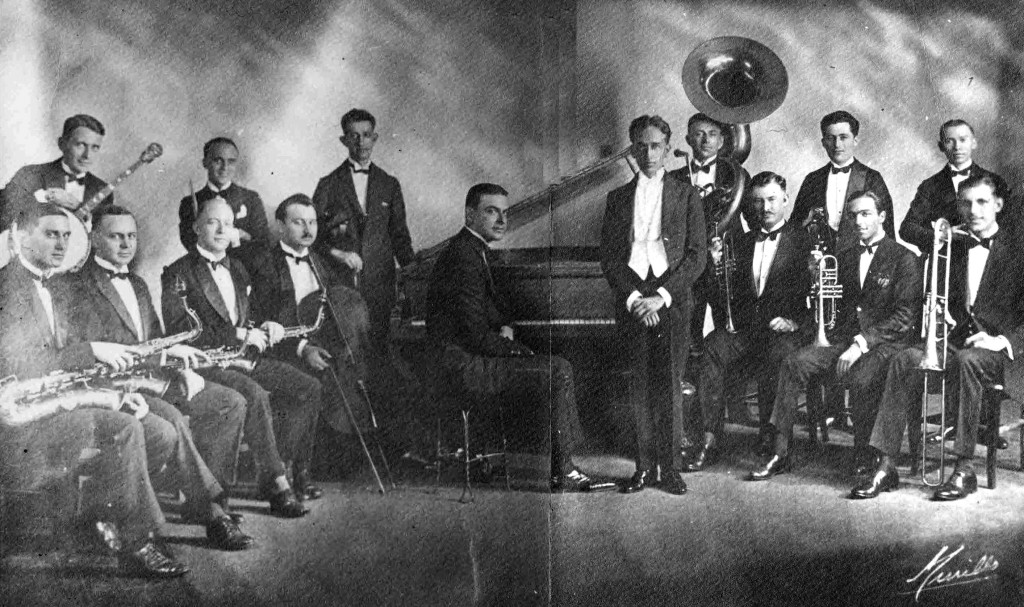
By the next session, in June, Rodemich had reorganized his group as a more modern dance band. The brass is present and prominent. The pulse is more clearly demarcated and forward, and each chorus features more variations in the ensemble texture. Section parts have flashier writing. Novelty effects pop up more often, though comedy doesn’t overpower music. Brown was one of the few musicians Rodemich kept in his revamped band, indicating the banjoist’s musical versatility and possibly his professional reliability.
Bandleader, multi-instrumentalist, and St. Louis hot music historian T.J. Müller points out that, on these first records, “Brown is playing clear, well-executed breaks. He’s probably not reading a part but probably did rehearse it—which doesn’t mean it’s not jazz!” Müller also notes “a caliber of playing on a national level, up there with banjoists like Harry Reser who were real soloists.” At the December 1922 session, Brown leads an entire chorus on “Down in Maryland.” Banjo solos were rare (but not unheard of) at the time. Fellow banjoists hearing these sides must have been impressed by Brown getting the spotlight and his technical ability.
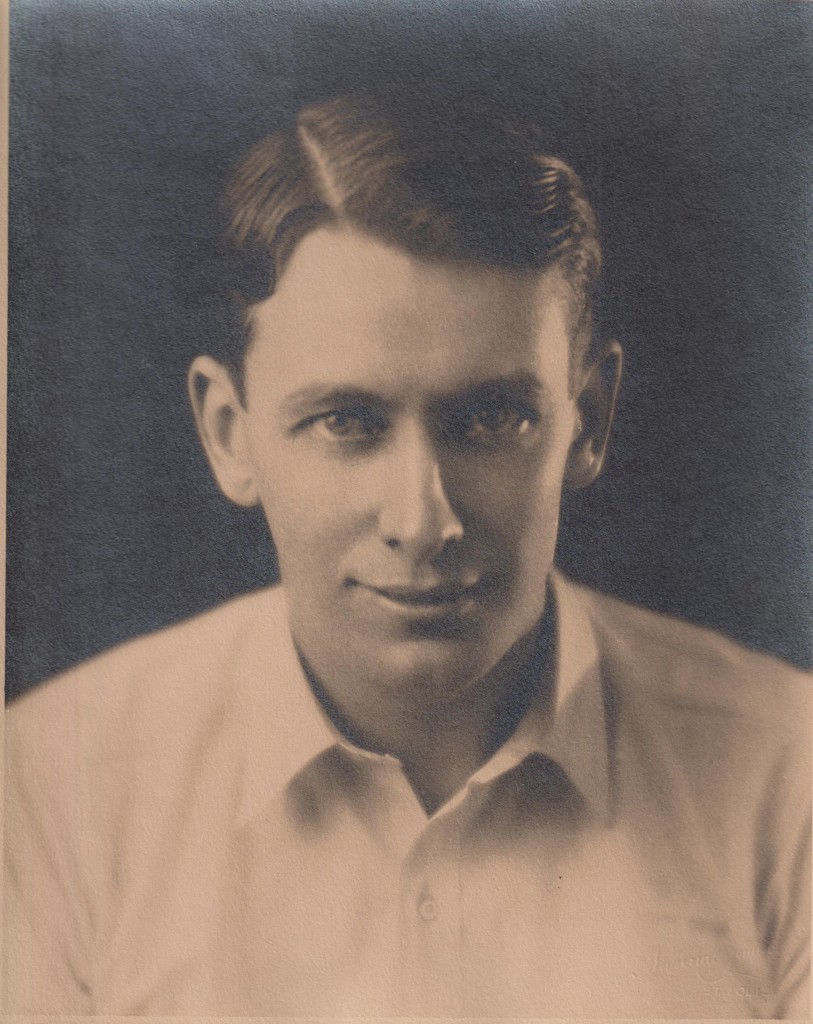
The band also recorded Brown’s composition “Three Little Words” at this session. This is a different song than the 1930 hit of the same name—but Bert Kalmar and Harry Ruby must have liked it enough to reuse elements for their tune. It was also popular enough to receive a stock arrangement upon publication.
When Rodemich brought his band to New York City, Brown stayed long enough to play the band’s first six sessions in June 1923. He was now recording for a popular label in a national hub of musical activity with his hometown colleague, Haenschen, as musical director. This could have opened several doors for Brown. There was plenty of work in studios and live dates. But Brown’s family explains that he would turn down offers to play with other bands because he disliked touring. New York City was probably wide open for Brown, but he didn’t need it.
Brown returned to St. Louis and joined Jack Ford’s Arcadia Peacock Orchestra at the popular Arcadia Ballroom. This was a more overtly jazz-oriented band; collective improvisation and solo spots are more common on their records. Brown gets to dig in harder in the rhythm section and receives more room as a soloist. Müller notes that Brown also switched to plectrum banjo with the Arcadia band. In addition to single-note lines, Brown plays in chord melody style (blending melody and harmony). “Where’s My Sweetie Hiding” is a standout track with the Arcadia group. Gazzoli notes how Brown starts with single string phrases before moving into an “immensely difficult, high-speed, multi-string solo, in effect turning his banjo solo into a kind of plucked piano solo” with chord substitutions and quick fingering that likely impress fellow banjoists.
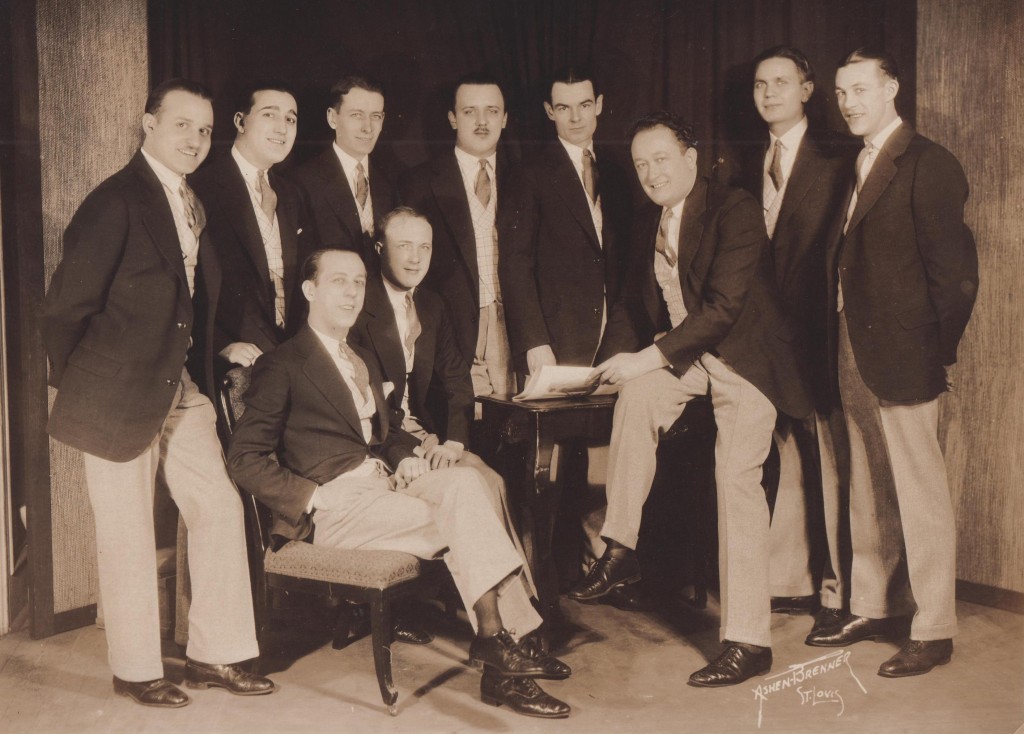
Hardworking and in demand, Brown took side jobs with other St. Louis bands while with the Arcadia band. He was back in the banjo chair when Rodemich’s band visited St. Louis and Chicago to make records. Rodemich eventually relocated back to St. Louis, and Brown left the Arcadia gig to rejoin him for a residency at the Coronado Hotel. He’s back on the tenor banjo for all of Rodemich’s sides from 1925 to 1926, a spurring part of the rhythm section featured on “One Stolen Kiss.”
St. Louis crowds must have been happy to get Rodemich back, but Brown never left. He was a familiar face on local bandstands. A department store advertisement proudly announced, “Mr. Porter Brown, premier banjoist of Jack Ford’s Arcadia Peacock orchestra, will demonstrate Gibson banjos in our music salon.” Around the same time and while still with Rodemich, Brown joined the staff orchestra at the newly opened KMOX radio station. Tom Satterfield, who’d go on to fame as an arranger for Paul Whiteman, was among the local music stars in the group. Working in this capacity—playing material ranging from popular hits to vocal accompaniments and light opera selections—required stylistic versatility, solid sightreading, and adapting to last-minute changes. Brown was up to the challenge.
He was also confident and personable enough on air to become the station’s first sports announcer. A blurb in the St. Louis Globe-Democrat of May 30, 1926, features a large portrait image of tuxedoed, smiling Porter Brown in what he’d later jokingly refer to as his “movie star pose.” The text underneath describes listeners being “well aware that an acrobat of the musical scale manipulates the banjo.” The announcement also praises Brown’s “ability to juggle the sound akin to the 30-letter alphabet of the Spanish language in addition to sundry other side tones and eccentricities of the Latin group of languages” and how he can “run down the chromatic scale on his banjo and get to the top again without missing any of the bases in nothing flat.”
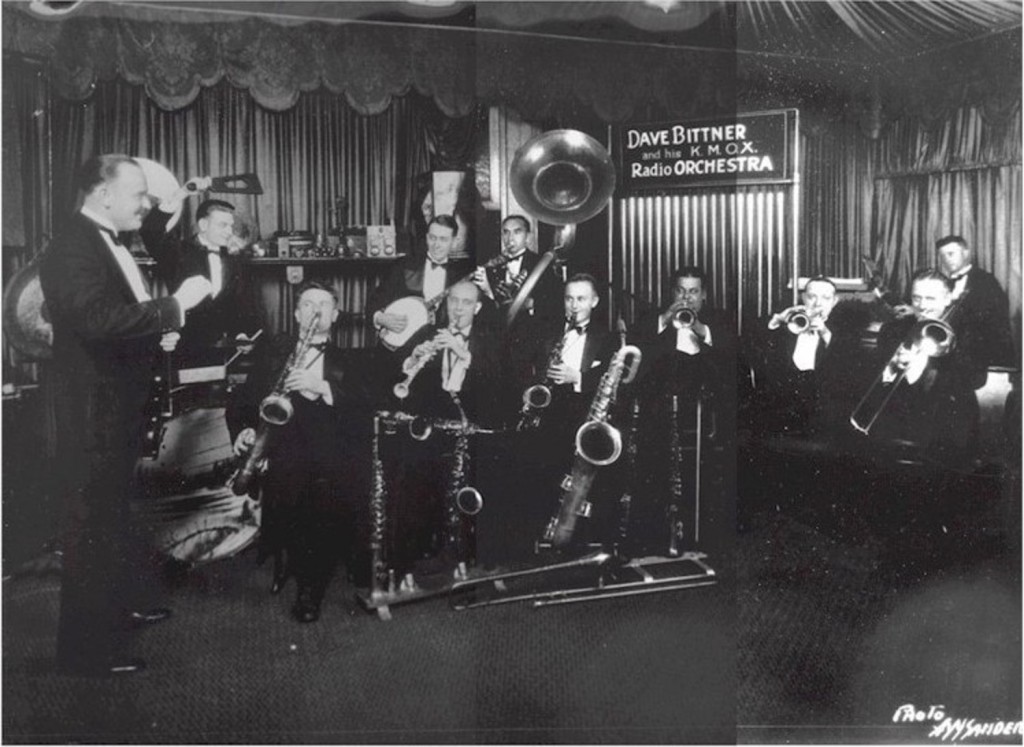
Attesting to his personality, the article concludes by mentioning “the smile that makes life worthwhile…shielded from radiating a pleasing personality by radio, the microphone not having been perfected to that point of efficiency.” In other words, technology couldn’t capture all of Porter Brown’s charm.
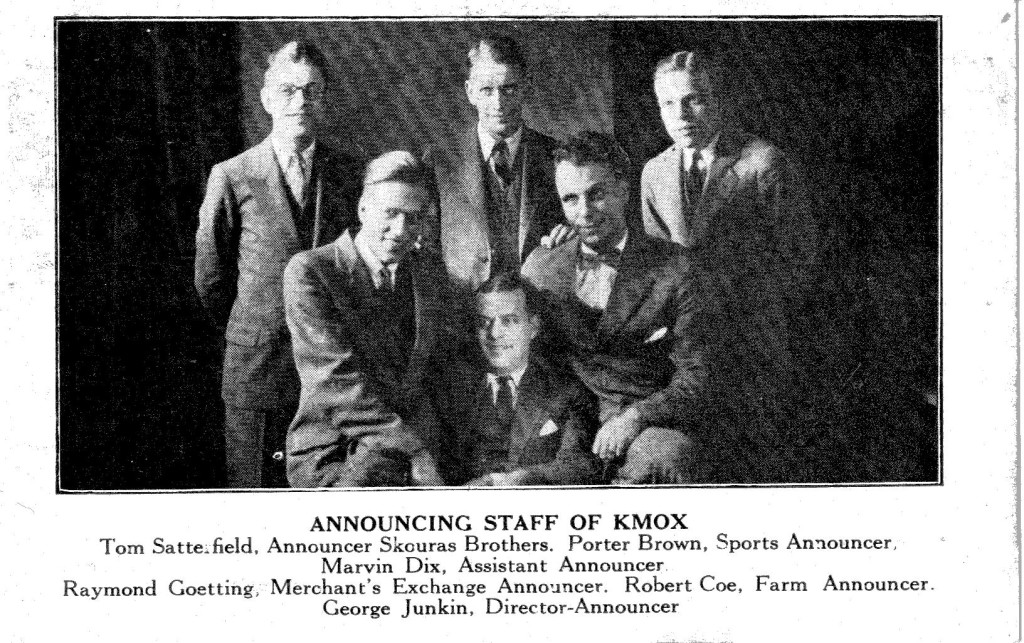
In mid-1926, Rodemich left St. Louis to become musical director for Van Beuren Cartoons in New York City. Brown continued performing and announcing on KMOX while working with other local groups. He became a reliable sub in bands coming through town, telling relatives he played with at least ten bands touring through St. Louis. Paul Whiteman was among the bandleaders confident in Brown’s ability to fill the banjo chair in his large orchestra with its complex arrangements and wide-ranging material. Whiteman was another impressive business connection, but Brown once again seemed more interested in playing than networking.
Always a Musician
Brown later told his family that he decided to leave professional music in light of the Depression closing ballrooms and radio competing with records. Yet even with the heavy blows to the music industry, there was plenty of work in radio orchestras, and Brown had already got in on the ground floor of KMOX. Nearly 100 years later, it’s easy to second-guess a stranger’s choices. We can also view this career change as an interest in a different line of work, a preference for steadier hours, or due to other pragmatic decisions.
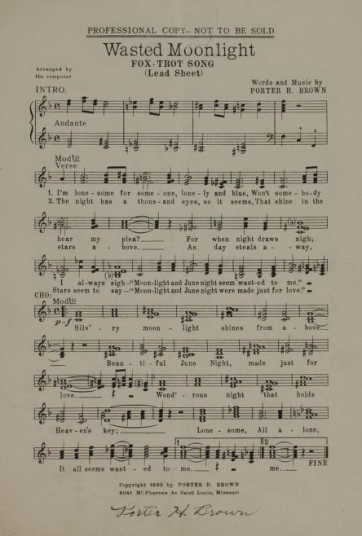 He may have had enough of the music business even if he still loved playing music. His daughter remembered Brown encouraging her to take piano lessons. But based on her abilities, he told her not to pursue a music career. Maybe this was a harsh judgment, or it might have been tough love. Brown knew the industry, its demands, and its competitiveness. Perhaps he was trying to protect his only child from it.
He may have had enough of the music business even if he still loved playing music. His daughter remembered Brown encouraging her to take piano lessons. But based on her abilities, he told her not to pursue a music career. Maybe this was a harsh judgment, or it might have been tough love. Brown knew the industry, its demands, and its competitiveness. Perhaps he was trying to protect his only child from it.
Brown took a job with a chemical company and relocated with his wife, Anne, to Chattanooga, where they welcomed little Moir into the world in 1929. Shortly after Moir’s birth, they moved to Jacksonville, Florida, and lived there until 1941. Brown’s grandson said his mother shared fond recollections of Brown playing at family parties on the beaches of Florida. The Chattanooga Daily Times, covering a local Civitan service club meeting, mentioned Brown’s banjo accompanying singers. The Freeport Facts of Texas, reporting on employees of Ethyl-Dow chemicals in town for a company safety banquet, notes the entertainment including Brown playing banjo in “Hep Hazard’s band” and performing as one of the leads in a “melodrama in eight parts [about] the humorous adventures in the jungles.”
In 1941, the Brown family moved to the St. Louis suburb of Webster-Groves in 1941. Porter played banjo semi-professionally in the area while working in sales. A two-page feature in the St. Louis Globe-Democrat on April 10, 1960, about an “Old Timers’ Jam Session” includes Brown as a regular at the monthly gatherings of other semi-retired pros. The reporter is sure to mention the group being “good enough that many ‘name’ musicians who come to St. Louis welcome a chance to sit in,” with Edmond Hall, Albert Nicholas, Pee Wee Russell, and Ralph Sutton among them.
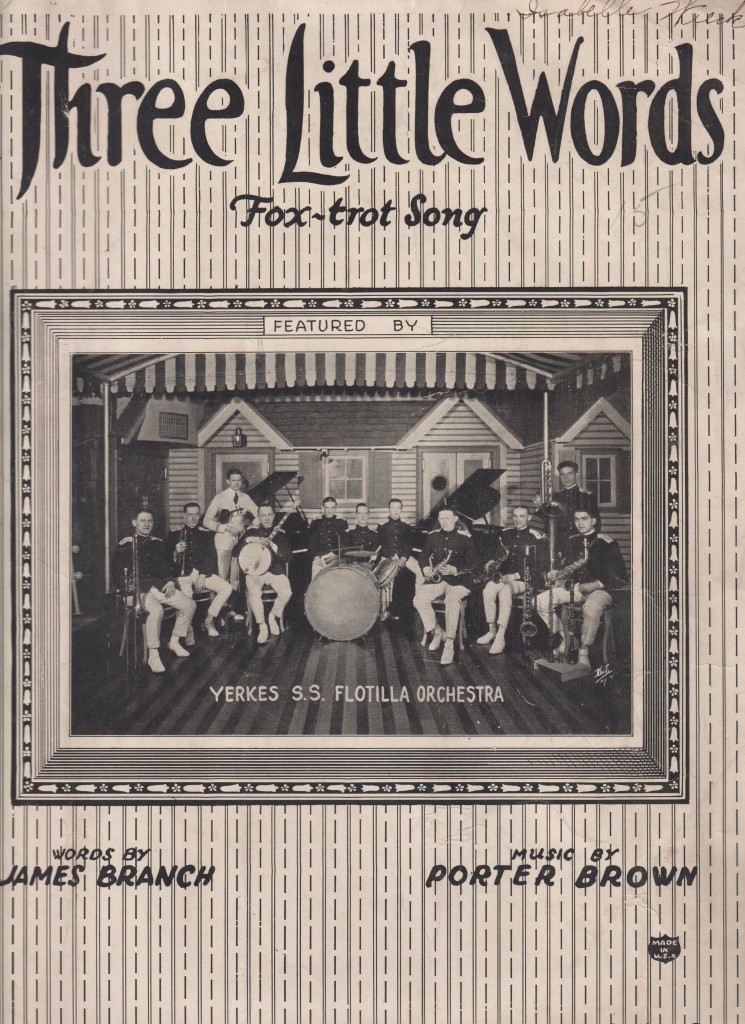
While researching this piece, one of the most pleasant surprises was the discovery of Brown playing on radio air checks and home recordings. “His playing changes a bit throughout time,” observes Müller. “No matter what the year, it’s quintessential for that period. By 1941, for example, when he does that ‘St. Louis Blues’ live radio broadcast on plectrum, his style is comparable to Eddie Peabody with some impressive chord melody playing. But it’s perhaps more advanced than Peabody. He has this arsenal of single-note tricks that use these downstroke patterns that I haven’t heard many other banjo players do. In fact, I spent about half an hour last night trying to copy as many of them as I could!” Müller owns two of Brown’s banjos, including the Paramount tenor banjo he acquired from Brown’s grandson.
In 1964, that grandson recorded several banjo solos showing Brown as confident and joyous as ever. He plays everything from twenties warhorses like “Whispering” to modern standards such as “Autumn Leaves” and the recent smash “Hello, Dolly!” The single-note phrases and chord melody style are all there in full force, along with bass notes and chromatic fills. It may be hard to believe that the dynamic force on these recordings would succumb to cancer just two years later. But we only expect things or get surprised by them in hindsight. Brown just played what he wanted and lived where he was happy. May we all be so fortunate.
The 1964 Porter Brown Home Recordings
Bill Bailey
Hello, Dolly
Medleys 1-6
Tea For Two
Twilight Time
1941 Home Recordings and Air Checks
St. Louis Blues, air check
Desert Sands [home recording and original composition by Porter Brown]
Cuddle Up – Gettin’ Sentimental – My Gal Sal [home recording]
Discography
This is a discography of all issued/available recordings believed to have Porter Brown playing on them. Complete information about matrix numbers, issues on client labels, and other discographical details is available online through the Discography of American Historical Recordings website. Precise personnel and dates are sometimes unknown due to conflicting reports and the lack of remaining session files. All available personnel sources, including those that do not list Brown on the session, are included below.
September and/or October 1921
New York, New York
GENE RODEMICH’S ORCHESTRA
A program for St. Louis’s New Grand Central Theatre dated September 10, 1921, lists musicians in concert orchestra and the feature orchestra used for comedies as Rodemich (director); Jules Silberberg (asst. dir.); Jules Blattner a.k.a. “Blather,” A. Bates (trumpet); Sid Hartman (trombone); Jules Silberberg (violin, saxophone); Otto Reinert, Andrew Gill, Charles Kaub (vln); Aug. Stocker (viola); Henry Ruppert, C. Banks (cello); Louis Albers (bass); G. Younkman (flute); A. Bafuno (clarinet); Elder Kellersberger (oboe); Wm. Cibulka (bassoon); Gene LePique (p); Oscar H. Jost, Stanley Wallace (organ); Hammond “Bill” Baily (xylophone); Paul Sporleder a.k.a. “Spor” and “Spoerloder” (drums).
Phil Evans’s Tram: The Frank Trumbauer Story lists the personnel for Rodemich’s orchestra at Brunswick studio in New York City in early October 1921 as Rodemich (p, dir); Clarence Foster (t); Paul Vegna (tb); Trumbauer, Benny Krueger (s); Silberberg (vln, s); Reinert (vln); Bailey (bj, x); Sporleder (d).
Tram: The Frank Trumbauer Story also reports personnel for Rodemich’s orchestra at the Grand Central Theatre in October 1920, November 1921, January 1922, and May 1922 as Rodemich (p, dir); Blattner (t); Wylie, Robb, Trumbauer (s); Reinert, Schmitt (vln); Bailey (x); Sporleder (d). A program dated May 6, 1922, for the New Grand Central Theatre in St. Louis conducted by Rodemich includes many of these musicians plus C. Forster (cornet); P. Vegna (tb); and Silberberg (s).
Porter Brown’s grandson told Bob and Hope Lang that Brown was in Rodemich’s band for a November 1921 record session, which may refer to some or all of the sides below.
- Fancies, Brunswick 2152
- Gypsy Blues, Br 2152
- Just Like a Rainbow, Br 2159
- Right or Wrong, Br 2183
- Cry Baby Blues, Br 2159
- Snowflake, Br 2169
- April Showers, Br 2169
June 1922
Per Johnson and Shirley’s American Dance Bands on Records and Film (ABDRF): Rodemich (p, dir); Blattner (t); unknown tb; Allister Wylie (s, p); Julius Robb (s); Reinert, Gus Schmitt (vln); Bailey (s, bj); David H. Silverman (p); Sporleder (d).
Per Brown’s grandson, personnel for Rodemich’s 1922 record sessions was Rodemich (p, dir); Charles Werner, Clarence Foster (c); unknown Trombone; Bailey, Trumbauer (s); Fred Wilde, Joe Winter (vln); Brown (bj); unknown brass bass; Paul Sporleder (d); Wylie, Silverman (p). Trumbauer said he had left Rodemich by May 1922.
- Bamboo Bay, Br 2290
- Broken-Hearted Blues, Br 2290
- Nobody Loves Me Now, Br 2299
- Whenever You’re Lonesome, Br 2299
- It’s Up To You (J’en ai Marre), Br 2291
- ‘Neath The South Sea Moon (Intro. My Rambler Rose), Br 2291
December 1922
Per ABDRF, Rodemich (p, dir); Clarence Foster, George Moskowtiz (t); Ed Bass (tb); Marion Henderson (cl, alto sax, fl); Wylie (as, p); Silberberg (s, vln); Reinert, Gill or Arnold Pesold (vln); Bailey (bj, s); John Broughton (bb); Sporleder (d).
- Teddy Bear Blues, Br 2379
- Fate, Br 2379
- Three Little Words, Br 2398
- Without You, Br 2398
- Railroad Man, Br 2399
- Flower of Araby, Br 238
- Falling, Br 2389
- Down In Maryland, Br 2391
June 19, 1923
Per ABDRF, Rodemich (p, dir); Werner, Foster? (t); Conley (tb); unknown sax; Wylie (cl, as, p); Henderson (cl, ts); Bailey (bj, x); Ferris Yamin (bb); Paul Spoerloder (d).
Per Jacobs Orchestra Monthly of November 1924, personnel of Rodemich’s orchestra at St. Louis’s Hotel Statler in summer 1923 was: Rodemich (p, dir); Bailey (cl, as, x); Silberburg (s, vln); Reinert (vln); Conley (tb); Ed Storman (bj); Wylie (p); Joe Zotterella (bb); Sporleder Sporleder (d).
- Rose Of Sunny Italy, Br 2480
- On the Isle of Wicki-Wacki-Woo, Br 2474
- Bebe, Br 2454
June 20, 1923
Per ABDRF, same as the session on June 19, 1923.
- Oh Sister Ain’t That Hot, Br 2474
June 21, 1923
Per ABDRF, same as the session on June 19, 1923.
- Wolverine Blues, Br 2455
June 23, 1923
Per ABDRF, same as the session on June 19, 1923.
- St. Louis Tickle, Br 2480
June 25, 1923
Per ABDRF, same as the session on June 19, 1923.
- When Junes Comes Along with a Song, Br 2455
June 28, 1923
Per ABDRF, Bennie Krueger (as) is present.
- Love Tales, Br 2454
January 18, 1924
Chicago, Illinois
- My Sweetheart, Br 2572
January 1924
St. Louis, Missouri
ARCADIA PEACOCK ORCH. OF ST. LOUIS: Jack Ford (vln, dir); Bob Pope (t); Tommy Moore (tb); Bud Hassler (cl, as, cello); Bill Schmidt (cl, as); Jules Schneider (cl, ts, asst. dir); Al Carsella (accordion); Eddie Ward (p, arranger); Porter Brown (bj); Chick Harvey (tu, vcl); Marty Gardner (d); Morty Livingston (vcl). This personnel is listed in ABDRF and a handwritten note found in Porter Brown’s memorabilia.
- Trippin’ Along (With You and Me), Okeh 40044
- Ain’t You Ashamed?, Ok 40052
- She Wouldn’t Do What I Asked Her To, Ok 40052
- Dream Boat, Ok 40044, Par 40044
SOPHIE TUCKER: Tucker (vcl); Bob Pope (t); Tommy Moore (tb); Bud Hassler (cl); Jules Schneider (ts); Ted Shapiro (p); Porter Brown (bj); Chick Harvey (bb).
- I’ve Got a Cross-eyed Papa, Ok 40068
- Hula Lou, Ok 40068
February 21, 1924
Chicago
GENE RODEMICH’S ORCHESTRA
Per ABDRF, Rodemich (p, dir); Charles Werner, Jess Walton (t); Larry Conley (tb); Allister Wylie (s, vln); Hammond “Bill” Bailey (cl, as, x); Jules Silberburg (s, vln); Otto Reinert (vln); Ed Storman (bj, g, vcl); Joe Zotterella (bb); Paul Sporleder (d).
- Sunshine of Mine, Br 2579
- Mobile Blues, Br 2599
- Tenth Interval Rag, Br 2599
September 12, 1924
Chicago
Per ABDRF, Rodemich (p, dir); Charles Werner, Clarence Foster (t); Larry Conley (tb); Allister Wylie (s, vln); Hammond “Bill” Bailey (cl, as, x); Jules Silberburg (s, vln); Otto Reinert (vln); Ed Storman (bj, g, vcl); John Bambridge? (bb); Paul Sporleder (d).
- That’s Georgia, Br 2731
- Worryin’ Blues, Br 2731
October 20, 1924
St. Louis
- Shanghai Shuffle, Br 2760
October 21, 1924
- Dreary Weather, Br 2756
- Honolou, Br 2760
October 22, 1924
- Dear One, Br 2756
November 24, 1924
Trombonist Larry Conley identified the personnel in a photograph from a recording session at Brunswick’s New York City studio from November 24, 1924, as: Rodemich (p, dir); Charles Werner, maybe Jess Walton, Clarence Foster (t); Conley (tb); Hammond “Bill” Bailey (cl, as, x); Jules Silberburg (s, vln); Otto Reinert (vln); Ed Storman (bj); Allister Wylie (p); possibly John Bambridge (bb); Paul Sporleder (d); unknown musician perhaps taking the photo. Records show the Rodemich band was recording in St. Louis at this time, so this photograph may have been from another session in New York City.
- Choo Choo (Gotta’ Hurry Home), Br 2775
- Lonely and Blue, Br 2775
November 29, 1924
St. Louis
ARCADIA PEACOCK ORCH. OF ST. LOUIS.
Per ABDRF, the same personnel as January 24, 1924, with Al Carsella (p) added for some tracks.
- Dog on the Piano, Ok 40272
- Where’s My Sweetie Hiding?, Ok 42054
- Little Boy Blues, Ok 40440
- Spring Had Gone, Ok 40264
- Let Me Be the First to Kiss You Good Morning, Ok 40254
- Ah! Ah! Archie, Ok 40264
January 19, 1925
St. Louis
GENE RODEMICH’S ORCH.
- How Come You Do Me Like You Do, Br 2824
- One Stolen Kiss, Br 2824
February 17, 1925
- Everybody Loves My Baby, Br 2843
- When I Think of You, Br 2843
- You’re So Near and Yet So Far, Br 2867
March 25, 1925
Per ABDRF, same as above except Jess Walton and Harold Ripplinger replace both trumpets.
- Isn’t She The Sweetest Thing?, Br 2892
- I Had Someone Else Before I Had You, Br 2867
- Got No Time, Br 2892
early April 1925
ARCADIA PEACOCK ORCH. OF ST. LOUIS
St. Louis
- (If It Wasn’t for You) I Wouldn’t Be Crying Now, Ok 40372
- Waitin’ for the Moon, Ok 40372
February 21, 1926
Chicago
GENE RODEMICH’S ORCHESTRA
Per ABDRF, Rodemich (p, dir); Claude Conrad, Nick Belcastro (t); Bob Smith (tb); Ted Hunt, Hammond “Bill” Bailey (cl, as); Alex Halbran (ts); Tom Satterfield (p, arr) or Al Eldridge (p); A. Spillier (bb); Porter Brown (bj); Freddie Wild (vln); Paul Sporleder (d). Jacobs Orchestra Monthly of January 1926 reported the same personnel for Rodemich’s orchestra playing on KMOX since December 1925 except Duke Selders (tb) was also among the personnel.
- Tamiami Trail, Br 3073
March 10, 1926
- Hot Notes, Br 3073
Sources
The writer greatly appreciates Porter Brown’s granddaughter-in-law and T.J. Müller for sharing their time, insights, and materials. Additional information about the following sources is available upon request.
- Davidson, Matthew de Lacey: “Moonlight Memories: How the Corporate Culture of Brunswick Records Mirrored American Popular Culture of the Early 1920s” in The Syncopated Times of May 31, 2022
- Discography of American Historical Recordings (online)
- Evans, Phil: Tram—The Frank Trumbauer Story
- Gazzoli III, John J.: “Forgotten Jazz Pioneer of St. Louis” in The Mississippi Rag of May 2002
- “Echoes from Old Webster: The Forgotten Jazz Pioneer of Webster Groves” in Webster-Kirkwood Times of June 15, 2001
- “The Forgotten Jazz Pioneer of Webster Groves: The Career and Music of Porter Harris Brown,” presentation notes from May 22, 2001
- Hancock, Colin: Conversation online
- Johnson and Shirley, American Dance Bands on Record and Film
- Lang, Bob and Hope Conley Lang: “The Brunswick Recordings of Gene Rodemich’s Orchestra” (online)
- Lord, Tom: The Jazz Discography (online)
- Miscellaneous newspaper articles from Chattanooga Daily Times, Freeport Facts [Texas], Hartford Courant, St. Louis Globe-Democrat, and St. Louis Post-Dispatch
- Miscellaneous public records available through ancestry.com



























